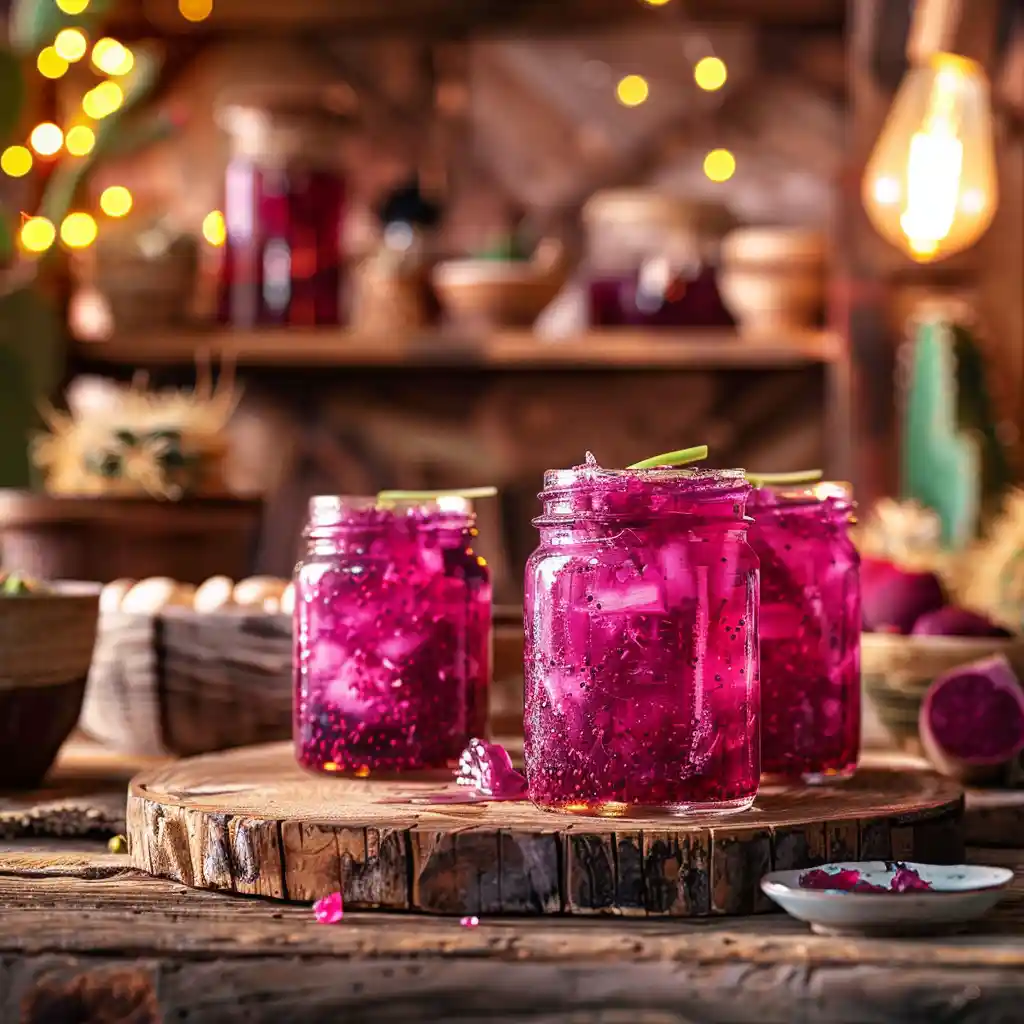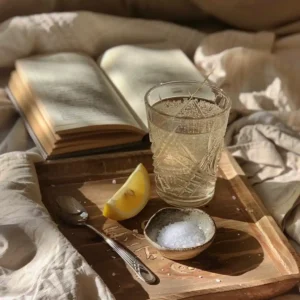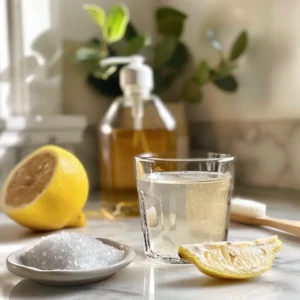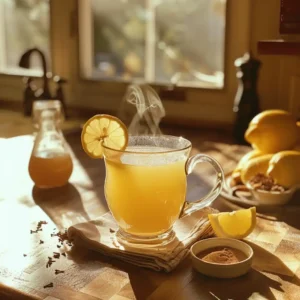There’s something absolutely magical about the first time you taste prickly pear jelly—that vibrant, magenta-pink spread that’s equal parts sweet and tangy, with a touch of watermelon and bubblegum in every bite. I remember my first encounter with prickly pear jelly during a road trip through Arizona, where roadside stands sold jars of this cactus-based treat made from the wild fruit known as “tunas.” It was love at first spoonful.
In this article, I’ll walk you through my step-by-step journey of making prickly pear jelly from scratch—right from harvesting and peeling the cactus fruit to the final water bath canning. You’ll find practical tips, real kitchen experiences (including my first prick from the sneaky glochids), and delightful ways to use the jelly beyond toast.
Whether you’ve foraged your own prickly pears or picked up a basket at a farmer’s market, this recipe is your guide to turning desert gold into a sweet, spoonable treasure. I’ll also share why choosing the right fruit makes a difference and how the texture of prickly pear jelly can vary depending on the method and ingredients you use.
Before we dive in, check out my pear jelly recipe for another colorful jelly adventure that’s just as simple and rewarding. You’ll see how easy it is to turn seasonal fruit into shelf-stable jars of goodness with minimal ingredients and maximum flavor.
Let’s get sticky—in the best way—and bring this desert gem into your kitchen!
Introduction to Prickly Pear Jelly
What is Prickly Pear?
If you’ve ever driven through the American Southwest, you’ve probably spotted prickly pear cacti dotting the desert landscape. Their wide, paddle-shaped pads and bright-colored fruit make them hard to miss. The fruit—commonly called “tunas”—is where the magic lies. When ripe, they range from deep red to electric purple, with juicy pulp inside that’s surprisingly sweet and aromatic.
The prickly pear (from the Opuntia cactus) has long been used in Mexican and Indigenous cultures. From jams to drinks, and even skin treatments, this wild fruit is as versatile as it is striking. I first came across it during a visit to Tucson, where a local farmer offered me a piece of candy-colored jelly on a cracker. That single bite started my obsession.
This jelly is more than a spread—it’s a taste of tradition and terrain.
Why I Fell in Love with Prickly Pear Jelly
Back in my kitchen, I was determined to recreate that same jelly I tasted under the Arizona sun. But nothing prepared me for the messy, thorny reality of working with this fruit. The first time I tried peeling one without gloves—ouch. Those tiny, hair-like spines (called glochids) found their way into my fingers and refused to budge.
But after learning the right method—burning off the spines, slicing open the tender flesh, and boiling down the pulp—I discovered that it was totally worth the effort. The color alone is reward enough: a bold, almost neon pink that lights up any jar or breakfast table.
Beyond toast, it works beautifully in glazes for grilled meats or drizzled over soft cheese. This isn’t just jelly—it’s a conversation starter, a gift idea, and a little desert adventure in a jar.
Want more vibrant fruit ideas? Don’t miss our pink lotus drink recipe—it pairs beautifully with brunches and brightens up any table spread.
What Does Prickly Pear Jelly Taste Like?
Describing the Unique Flavor Profile
If I had to describe prickly pear jelly in one word, it would be: unexpected. It doesn’t taste like anything you’d imagine comes from a cactus. The flavor is gently sweet, with notes that remind me of watermelon and bubblegum, followed by a whisper of citrus. It’s subtle and smooth—not overpowering, but still distinct enough that everyone who tries it says, “What is that delicious taste?”
Depending on the ripeness of the fruit, the prickly pear jelly can have more tartness or a softer sweetness. The best batches I’ve made were from deeply red fruits picked just after the summer monsoons. That’s when the flavor really bursts with character.
This isn’t your average grape or strawberry jelly—it’s more exotic, more nuanced, and a lot more fun. If you’re into unique fruit spreads, this cactus-based jelly deserves a permanent spot in your pantry.
Texture and Aroma – What to Expect
What surprises most people about prickly pear jelly isn’t just the taste—it’s the color and texture. The jelly has a brilliant magenta hue that makes it almost too pretty to eat. On warm toast, it glistens like stained glass.
Texture-wise, prickly pear jelly is silky and spreadable, never gritty or grainy if strained correctly. It glides across bread or crackers with ease and sets perfectly in the jar after a proper canning process.
The aroma? Earthy at first, then lightly floral with hints of citrus peel. It smells like desert rain and fresh fruit—a mix I never expected to come from cactus.
Honestly, it’s the kind of jelly that turns first-timers into forever fans.
Print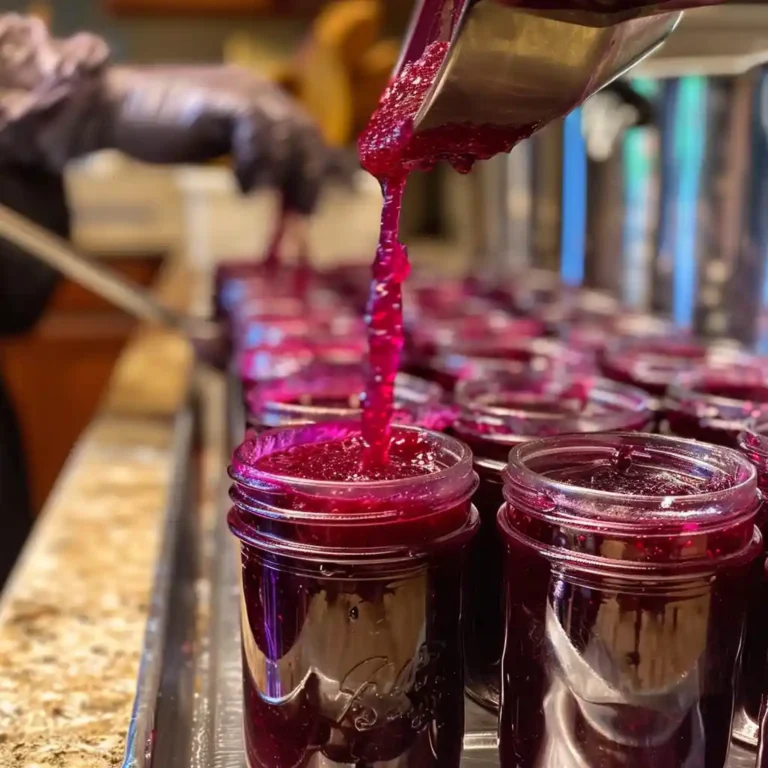
Prickly Pear Jelly
A stunningly vibrant jelly made from cactus fruit, combining a sweet-tart flavor with watermelon-bubblegum notes. This desert delight turns foraged fruit into a shelf-stable, gift-worthy treat.
- Total Time: 50 minutes
- Yield: 4 half-pint jars 1x
Ingredients
- 4 cups prickly pear juice (from fresh fruit or store-bought)
- 2 tablespoons lemon juice (freshly squeezed)
- 1 box powdered pectin (1.75 oz, regular or low-sugar)
- 4 cups granulated sugar
- 1/2 teaspoon vanilla extract (optional)
- Pinch of sea salt (optional)
Instructions
- Wash and sterilize 4 half-pint jars and lids; keep hot until use.
- Use gloves and tongs to handle fruit. Burn off glochids, slice and scoop pulp. Simmer with a splash of water for 15–20 minutes.
- Strain pulp through cheesecloth or sieve to get 4 cups juice.
- In a large pot, combine juice and lemon juice. Stir in pectin and bring to a boil.
- Add sugar all at once, stir, and bring to a full rolling boil for 1–2 minutes.
- Test doneness with cold spoon. Jelly should sheet off edge.
- Ladle hot jelly into warm jars, leaving ¼ inch headspace. Wipe rims, add lids, and tighten to fingertip tightness.
- Process in boiling water bath for 10 minutes. Cool jars undisturbed for 24 hours.
- Label and store in a cool pantry. Refrigerate after opening.
Notes
Always wear gloves when handling prickly pears to avoid glochid irritation. Jelly may be used in both sweet and savory recipes—from toast to meat glazes.
- Prep Time: 30 minutes
- Cook Time: 20 minutes
- Category: Preserves
- Method: Canning
- Cuisine: Southwestern
Nutrition
- Serving Size: 1 tablespoon
- Calories: 50
- Sugar: 12g
- Sodium: 1mg
- Fat: 0g
- Saturated Fat: 0g
- Unsaturated Fat: 0g
- Trans Fat: 0g
- Carbohydrates: 13g
- Fiber: 0g
- Protein: 0g
- Cholesterol: 0mg
Health Benefits & Disadvantages of Prickly Pear
Traditional Uses of Prickly Pear in Cultures
Before prickly pear jelly found its way into my kitchen, this desert fruit had centuries of history in traditional diets. In Mexico, the pads (called nopales) and the fruit (tunas) have been staples in everything from tacos to aguas frescas. While I focus on the jelly, I always find it fascinating how versatile this plant truly is.
From my own experience—and stories shared by local home cooks during my travels—prickly pear juice has been traditionally used for hydration and refreshment in the desert heat. Some even say it helps them feel more balanced after a long day in the sun.
The fruit is naturally rich in fiber, and many folks enjoy it for its satisfying sweetness without the crash that comes from added sugar. Plus, it’s a beautiful way to incorporate a wild, seasonal ingredient into your pantry.
This jelly, while sweetened, still carries some of that natural essence, especially when you make it with freshly picked fruit instead of store-bought juice.
Are There Any Disadvantages of Prickly Pear?
Let me be real: working with prickly pears is no walk in the park.
For starters, the spines—especially the nearly invisible glochids—can be deceptively nasty. I learned that the hard way the first time I grabbed one without tongs or gloves. It took me a full hour (and a pair of tweezers) to pick them out of my skin.
Aside from prep dangers, some people find that eating too much prickly pear (especially the raw fruit or juice) may cause digestive discomfort. From what I’ve heard in food forums and chats, overindulging might lead to mild bloating or even diarrhea. That’s why I always enjoy the jelly in small, balanced amounts—and it’s more than enough to satisfy a sweet craving.
Also, be cautious if you’re harvesting wild fruit. Not all prickly pears are created equal—some varieties are bitter or even inedible. When in doubt, ask a local or stick to trusted markets.
Looking for inspiration? Try our strawberry-pineapple swirl sprite—it’s another vibrant fruit treat that’s as fun to sip as prickly pear jelly is to spread.
How to Make Prickly Pear Jelly From Scratch
Ingredients You’ll Need (Including Pectin Options)
Here’s what you’ll need for a small batch of prickly pear jelly. I usually make about 4 half-pint jars, which is perfect for sharing (or hoarding—no judgment).
Basic Ingredients:
- 4 cups prickly pear juice (from fresh fruit or store-bought if in season)
- 2 tablespoons lemon juice (freshly squeezed, for balance and acidity)
- 1 box powdered pectin (1.75 oz, regular or low-sugar works fine)
- 4 cups granulated sugar
You can use low-sugar pectin if you prefer a less sweet jelly, but I find that a standard sugar-to-juice ratio gives prickly pear jelly the best texture and color.
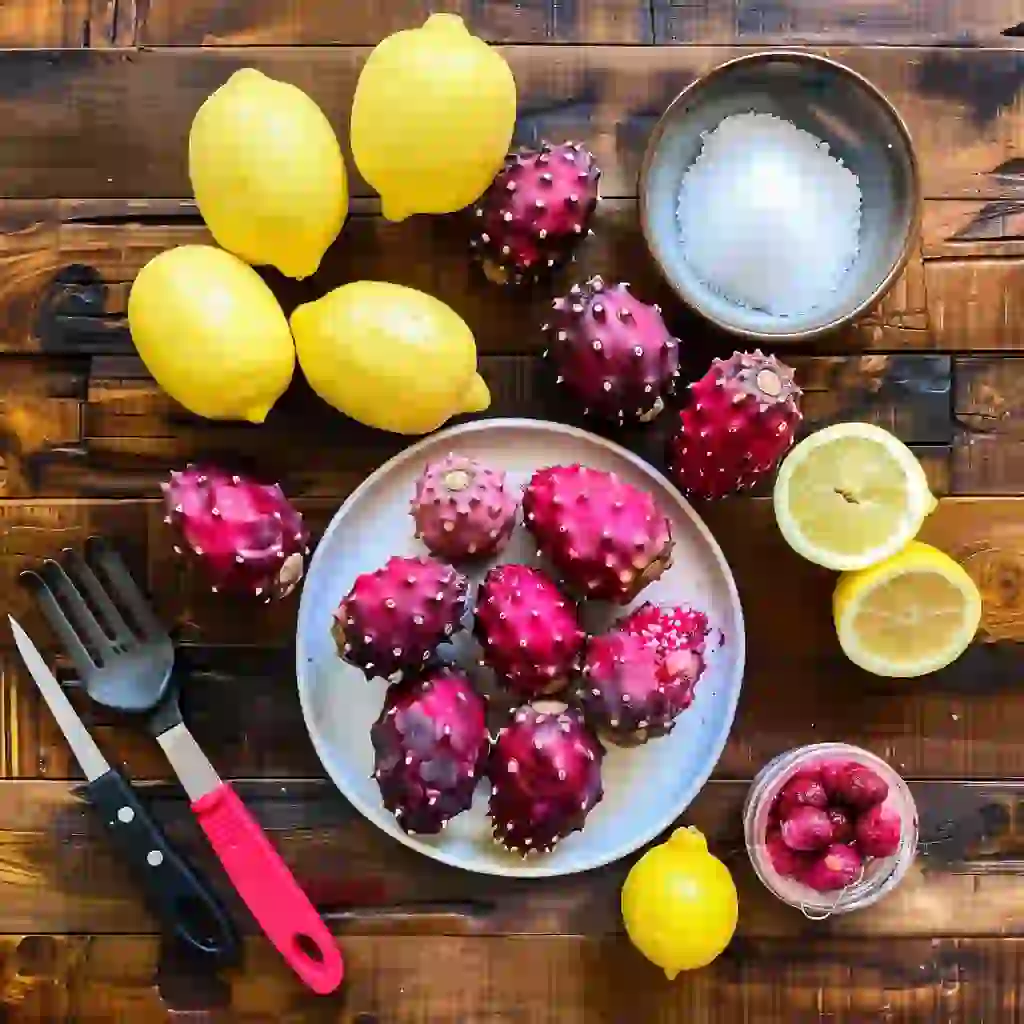
Optional add-ins:
- ½ teaspoon vanilla extract (for a warm flavor note)
- Pinch of sea salt (to enhance fruitiness)
Tip: Always use gloves and tongs when handling fresh prickly pears. I once skipped this, and those tiny glochids had me regretting it all afternoon.
How to Harvest & Prepare Fresh Prickly Pear Fruit
Safely Picking & Peeling the Fruit
If you’ve never picked a prickly pear before, let me say this: respect the cactus. Those tiny spines are no joke. I learned that lesson the hard way during a late-summer forage in New Mexico. The fruit looked so ripe and ready, I couldn’t resist reaching out—barehanded. Big mistake.
Here’s the safe way to harvest fruit for your prickly pear jelly:
- Gear up with thick gloves, long sleeves, and a pair of tongs.
- Choose ripe fruit—deep red or purple with a little give when pressed.
- Twist gently with tongs to remove the fruit from the cactus pad.
- Drop them into a bucket or box lined with a towel to cushion them.
Once you’re home, the real prep begins.
To remove glochids (those hair-like spines), I recommend:
- Burning them off over a gas flame or using a long lighter.
- Rinsing and scrubbing with a stiff brush under cold water.
Then it’s time to peel:
- Cut off both ends of the fruit.
- Slice lengthwise through the skin.
- Use your fingers or a spoon to roll the skin off and scoop out the juicy center.
All of this might sound intense, but trust me—it’s worth it for that first spoonful of prickly pear jelly made with your own hands.
Juicing Methods for Jelly Making
Getting juice from prickly pear fruit is simpler than it sounds, though it can get a bit messy. I’ve tried a few different ways, and here’s what works best for me:
Simmer & Strain Method (My Go-To):
- Chop peeled fruit roughly and place in a pot.
- Add a splash of water (just enough to prevent sticking).
- Simmer for 15–20 minutes, mashing occasionally with a potato masher.
- Strain through cheesecloth or a jelly bag overnight for the clearest juice.
Blender Method (Faster, Slightly Cloudier):
- Blend peeled fruit until smooth.
- Strain through a fine sieve or cheesecloth.
Each method yields that vibrant magenta juice, perfect for prickly pear jelly, and can be used right away or frozen for later. Just remember: prickly pear juice stains like crazy. Wear old clothes, use dark towels, and maybe keep a magic eraser on standby!
And if you’re already in the mood for creative kitchen play, don’t miss our banana bread latte—a cozy favorite that pairs beautifully with bold, fruity flavors like prickly pear jelly.
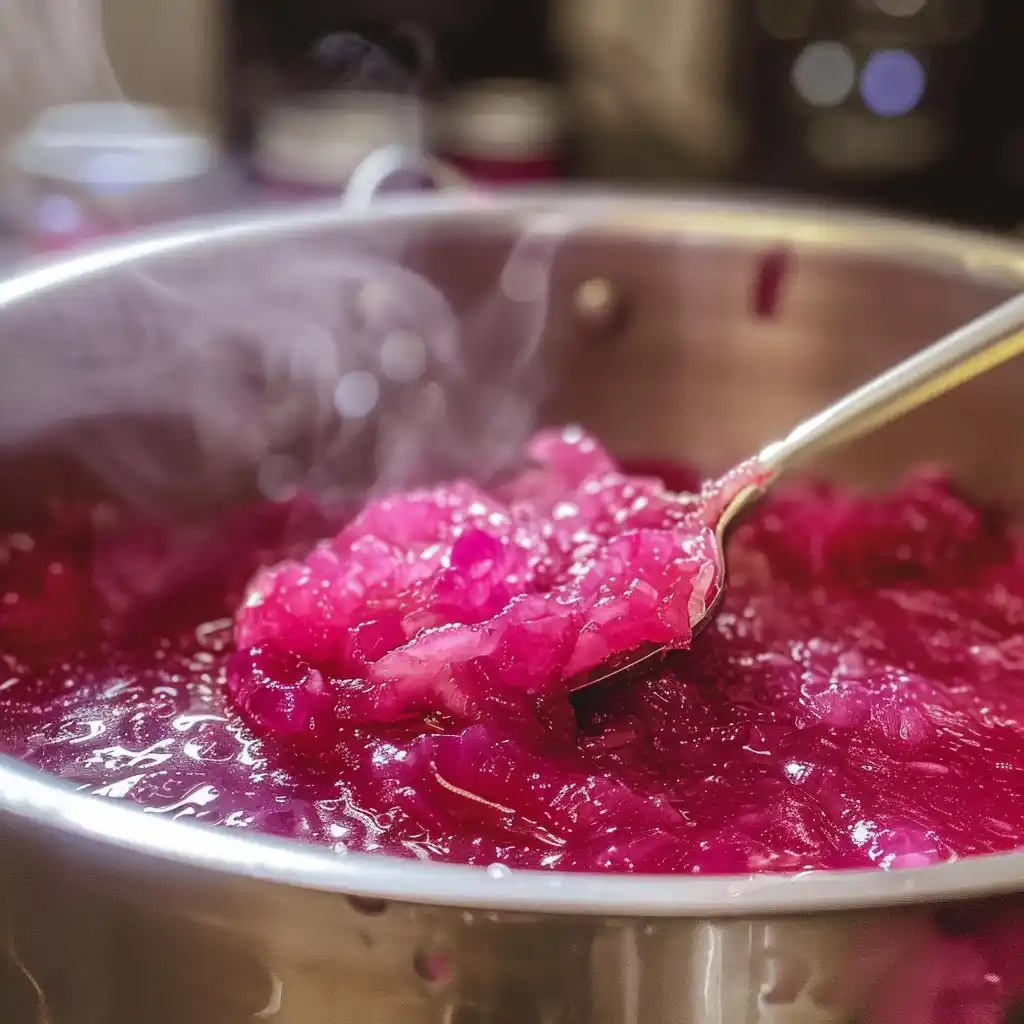
Canning & Storing Homemade Prickly Pear Jelly
How to Safely Can Prickly Pear Jelly (Water Bath Method)
If you’re like me, once you’ve made a gorgeous batch of prickly pear jelly, the last thing you want is for it to spoil. That’s why proper canning is essential—not just for food safety, but also for keeping that magical color and flavor locked in for months.
Here’s my tried-and-true water bath method for sealing your prickly pear jelly the right way:
- Sanitize your jars by boiling them for 10 minutes or running them through a hot dishwasher cycle.
- Keep the jelly hot right up until you’re ready to fill the jars.
- Use a funnel to ladle jelly into the jars, leaving ¼ inch headspace.
- Wipe the rims with a clean, damp cloth.
- Place lids and rings on, tightening just to fingertip snug (not too tight!).
- Lower jars into a boiling water bath with at least 1 inch of water covering the tops.
- Boil for 10 minutes, then turn off heat and let jars rest for 5 more minutes before removing.
Once out of the pot, listen for the “pop”—music to every home canner’s ears. That means your prickly pear jelly jars are sealed tight and ready to store for the long haul.
Storage Tips for Long Shelf Life
Now that your jelly is safely canned, here’s how I store it to keep things fresh and flavorful:
- Cool completely for 12–24 hours before labeling and moving.
- Store in a cool, dark pantry for up to 12 months.
- Once opened, keep refrigerated and use within 3–4 weeks.
If a jar didn’t seal properly, don’t toss it! Just refrigerate and enjoy it like you would fresh jelly. It’s still perfectly good—just not shelf-stable.
Bonus tip: Prickly pear jelly makes a beautiful gift. I often tie twine around the jar lid and add a handwritten label—it’s a small gesture that brings big smiles and even bigger flavor to someone’s day.
For more bright pantry ideas, check out our Japanese pink salt recipe—another eye-catching flavor booster that looks stunning on the shelf next to your homemade prickly pear jelly.
Creative Ways to Use Prickly Pear Jelly
Sweet Ideas: Toasts, Pancakes, and Dessert Fillings
Let’s face it—toast is just the beginning. Once I started experimenting with prickly pear jelly, I found myself reaching for it in places I never expected. It’s become one of my favorite go-to ingredients whenever I want something a little extra special.
Here are my favorite sweet uses for prickly pear jelly:
- Classic toast topper: Try it on sourdough or cinnamon swirl bread.
- Buttermilk pancakes: Warm the jelly slightly and pour it like syrup—total game changer.
- Crepe filling: Mix with cream cheese for a tart-sweet surprise.
- Layer cakes: Use it between sponge cake layers with whipped cream.
- Thumbprint cookies: Spoon a dollop in the center before baking.
- Yogurt swirls: Adds a pop of color and natural sweetness to plain Greek yogurt.
One of my proudest moments? Drizzling prickly pear jelly over vanilla ice cream and sprinkling crushed pecans on top. It tasted like summer in the desert—sweet, colorful, and just the right kind of indulgent.
Savory Uses: Glazes for Meats, Dressings & More
Prickly pear jelly isn’t just for sweet tooths—its unique flavor works surprisingly well in savory dishes too. I was skeptical at first, but after testing it as a glaze for pork chops, I was completely hooked.
Try these savory spins with your prickly pear jelly:
- Pork or chicken glaze: Melt with a splash of balsamic or soy sauce and brush over meat during the last few minutes of grilling.
- Salad dressing: Whisk with olive oil, lemon juice, and Dijon mustard for a sweet-tart vinaigrette.
- Charcuterie board: Serve it with brie, sharp cheddar, or goat cheese and crackers.
- Burger topping: A thin spread on the bun adds bold flavor without overpowering the patty.
Don’t miss our white peach sangria—it’s a refreshing complement to these savory dishes and pairs beautifully with the jelly’s bright, fruity notes.
With just one jar of prickly pear jelly, you’ll find endless ways to brighten your meals—from breakfast to dinner, sweet to savory.
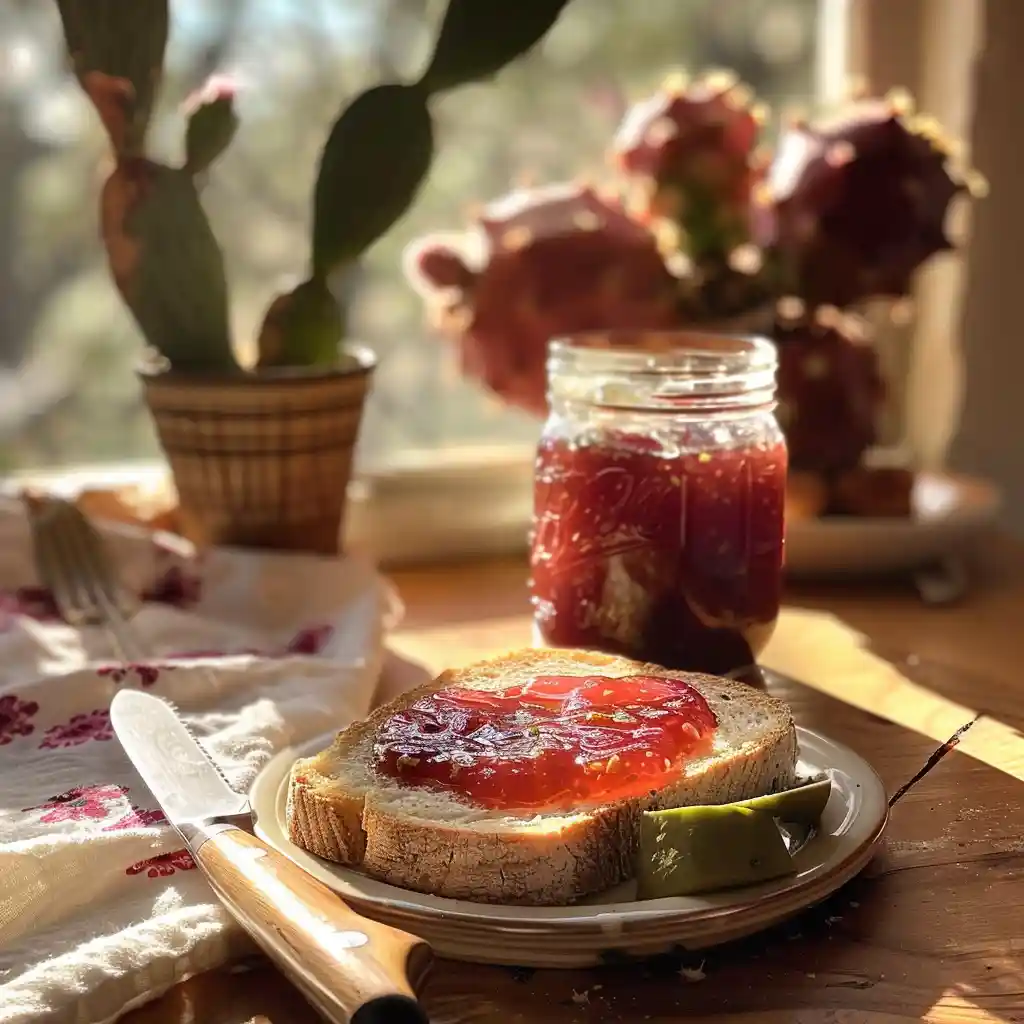
More Recipes Using Prickly Pear
Prickly Pear Lemonade and Juice
After making my first successful batch of prickly pear jelly, I had leftover juice and couldn’t bring myself to waste a single drop. That’s when I discovered the pure joy of prickly pear lemonade. It’s sweet, tart, and shockingly pink—basically summer in a glass.
Here’s my favorite version:
- 1 cup prickly pear juice
- ½ cup lemon juice
- 3 cups cold water
- 1–2 tablespoons honey or simple syrup (to taste)
Just stir, chill, and serve over ice with a lemon wedge. I’ve served this at brunches and BBQs—it never fails to impress. For a grown-up twist, add a splash of tequila or sparkling wine.
You can also enjoy straight prickly pear juice chilled over ice, or blend it into smoothies with mango, pineapple, or coconut milk. It’s not just tasty—it’s stunning.
Prickly Pear Syrup and Candy
If you’re in the mood for something sweet and sticky (and who isn’t?), prickly pear syrup is the way to go. It’s basically prickly pear jelly without the pectin—ideal for drizzling over pancakes, waffles, or mixing into cocktails.
To make a quick syrup:
- Simmer 1 cup juice, ½ cup sugar, and a splash of lemon juice until thickened.
- Store in the fridge for up to 2 weeks.
You can also go full-on DIY and make prickly pear candy. I once tried a candied jelly square recipe with citrus zest and coated it in sugar—it turned out chewy, tangy, and totally addictive. It’s like a desert-inspired Turkish delight that you can’t stop nibbling.
If this gets your sweet tooth going, check out our fluffy seagull latte—an airy, foamy treat that pairs wonderfully with fruit-based sweets like prickly pear jelly.
There’s so much more to this fruit than just jelly. The possibilities are as wild and colorful as the desert that inspired them—and I’ve barely scratched the surface.
FAQs About Prickly Pear Jelly
What does prickly pear jelly taste like?
Prickly pear jelly has a flavor that’s hard to pin down—but in the best way. It’s often described as sweet with hints of watermelon, bubblegum, and even subtle citrus. The taste is gentle and unique, not overly sugary or tart, and it leaves a refreshing finish. I’ve had batches that reminded me of cotton candy and others that leaned more fruity, depending on the ripeness of the fruit I used.
What are the disadvantages of prickly pear?
The biggest drawback of prickly pear is handling it. The tiny spines (glochids) can be very irritating to the skin if you’re not careful during harvest or prep. I once got pricked while peeling without gloves—it wasn’t fun. In terms of eating, some people might experience mild digestive issues if they consume too much of the raw fruit or juice. Also, overripe fruits can ferment quickly if not processed or refrigerated.
How to make fresh prickly pear jam?
To make fresh prickly pear jam, you’ll need to start by extracting juice from peeled and de-spined cactus fruit. Simmer the juice with lemon juice and sugar, then add pectin and bring it to a full rolling boil. Once it passes the spoon test (a drop should sheet off the spoon), pour the jam into sterilized jars and process in a boiling water bath. It’s very similar to making jelly but can include more pulp for texture. Always use gloves and strain well to remove seeds.
What can you make out of prickly pears?
Prickly pears are surprisingly versatile. You can make:
Jelly
Jam
Syrup
Lemonade
Juice
Candy
Cocktails
Salad dressings
Glazes for meat
I’ve even seen prickly pear margaritas and sorbet! The fruit adds brilliant color and a mild sweetness that works in both savory and sweet recipes. It’s truly one of the most fun fruits I’ve worked with in my kitchen.
Conclusion + Final Tips
After making this jelly dozens of times, I can honestly say: it never gets old. There’s something rewarding about turning a wild, spiny fruit into something so vibrant and flavorful. Whether you picked your prickly pears from the desert or grabbed them at a local market, the magic comes alive in your kitchen.
My favorite way to enjoy it these days? On a toasted English muffin with a swipe of butter and a cup of coffee on the porch. Simple pleasures, right?
If you’ve been thinking about trying your hand at homemade preserves, prickly pear jelly is a terrific place to start. It’s colorful, relatively simple, and sure to spark some good conversation around the breakfast table.
Don’t miss our pear jelly recipe for another sweet and seasonal way to fill your pantry. You’ll love how easy it is to go from fresh fruit to homemade spread—one jar at a time.
Want more inspiration like this?
Follow me on Facebook: https://web.facebook.com/profile.php?id=61574017187063
Discover more colorful ideas on Pinterest: https://www.pinterest.com/heartlyrecipes
This jelly-making journey has been full of sticky fingers, kitchen wins, and one or two cactus pricks—but I wouldn’t trade it for anything. Thanks for joining me!
